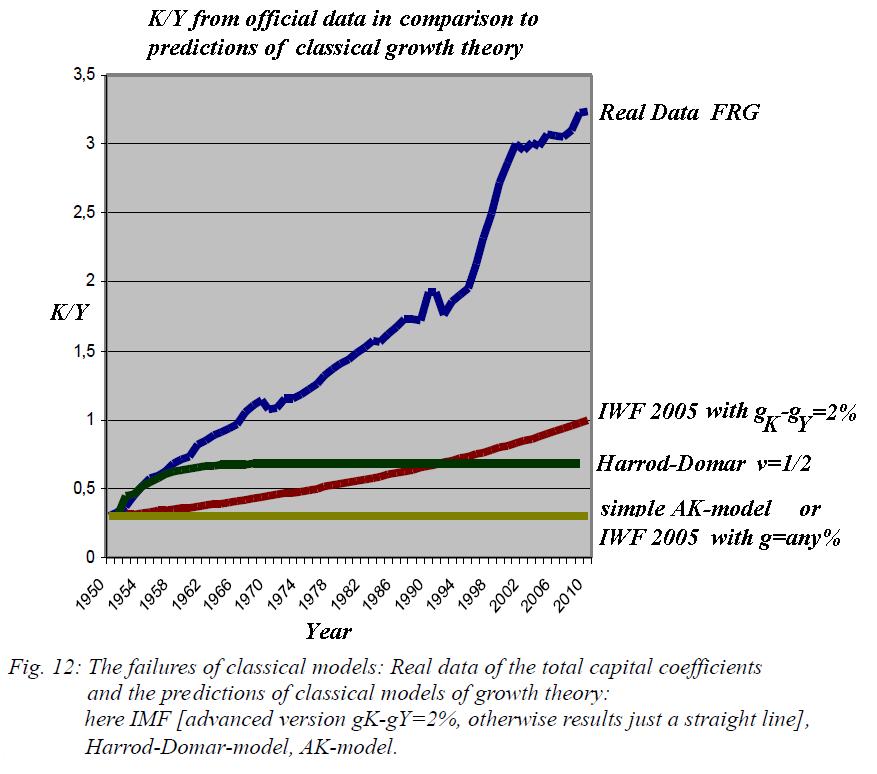14 AK-Models and Others
The treated hereafter called AK-model is a model of endogenous growth theory, dating back to the economist Sergio Rebelo, and has the simplest possible approach:
![]() (14.1)
(14.1)
AK-models, however, are generally singular with
respect to the unknown functions Y and K, as they use to derive
the relationship between production and capital stock functions from only one
basic equation. So the approach can impossible lead to
a self-consistent solution of the problem. The production function![]() can be arbitrary
and thus be choosen to adapt to any presumption or
series of measurements. Therefore such models can only interpolate any
presumption or measurement to the future. It contains no reliable statement
about cause and effect (or sources and sinks). The IMFs
2005 model turns out to be but also an AK-model, because it can, as in (1.5) is
shown, by example with
can be arbitrary
and thus be choosen to adapt to any presumption or
series of measurements. Therefore such models can only interpolate any
presumption or measurement to the future. It contains no reliable statement
about cause and effect (or sources and sinks). The IMFs
2005 model turns out to be but also an AK-model, because it can, as in (1.5) is
shown, by example with ![]() or a similar
function been rephrased to an AK-model. This is an effect as can be shown, that
applies to every mathematically singular model. The same applies to the classic
post-Keynesian growth model of Harrod and Domar (Harrod, 1939, Domar 1946), because it is based on the approach
or a similar
function been rephrased to an AK-model. This is an effect as can be shown, that
applies to every mathematically singular model. The same applies to the classic
post-Keynesian growth model of Harrod and Domar (Harrod, 1939, Domar 1946), because it is based on the approach
![]() (14.2),
(14.2),
with the definition of![]() as capital productivity. This results trivially
in
as capital productivity. This results trivially
in![]() and thus is
likewise a typical AK-model with
and thus is
likewise a typical AK-model with ![]() and
has of course the same problem.
and
has of course the same problem.

Amazingly also the other known mathematical models of growth are AK-models. This results in many cases from using the so-called Cobb-Douglas production function (CDPF). Therefore in the next chapter we will deal with this very often involved function to estimate growth questions in classical macroeconomics.